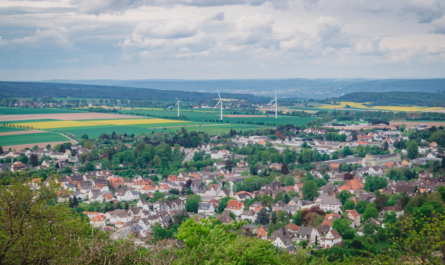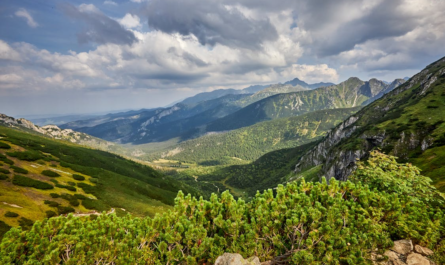Installed in the heart of the Austrian Alps, Alpbach is a village that seems to transcend time. Its history, culture, and beauty are preserved in its landmarks, which tell the story of this quaint town from its origins to its modern-day standing as a UNESCO World Heritage Site. This writing takes you on a journey through Alpbach’s past and present, revealing how its landmarks embody the village’s rich history and endless charm.
A Glimpse of Alpbach’s History
Before we delve into the landmarks that define Alpbach, it’s important to understand the history of the village. First noted in historical documents in the 13th century, Alpbach started as a small Alpine settlement. Over the centuries, the village’s life was shaped by its natural surroundings, agricultural heritage, and the strategic importance of the region.
Alpbach’s historical significance is closely tied to its development as a center for agriculture, particularly farming and dairy production. However, it was not until the late 19th century that the village began to attract tourists, becoming a popular destination for those seeking the tranquility of the Alps.
Today, Alpbach is as much a destination for modern-day adventurers as it is a place that showcases the legacy of those who came before. The preservation of its traditional Tyrolean architecture and its commitment to sustainability are central to the town’s identity, as reflected in its most prominent landmarks.
The Beauty of Alpbach’s Architecture
Alpbach’s architectural style is one of the primary reasons why it stands out as a beacon of Alpine beauty. The village has been described as one of Austria’s most beautiful, with its picturesque wooden houses, traditional farmsteads, and alpine chalets. What makes Alpbach’s architecture unique is its commitment to maintaining a traditional style that blends seamlessly with the natural landscape.
Alpbach’s wooden houses are characterized by their steeply pitched roofs and detailed carvings, which are a nod to the region’s cultural heritage. The village’s commitment to traditional building techniques is particularly evident in the buildings that line its main street, Dorfstraße. Here, visitors can stroll along the cobblestone streets and admire the fine craftsmanship of the homes, many of which date back centuries.
The village’s overall architectural harmony was not always this way. In the mid-20th century, Alpbach faced the threat of modern development that could have altered its character forever. However, a group of committed residents fought to preserve its traditional buildings, leading to the creation of strict building regulations that ensure any new constructions follow the Tyrolean architectural style. This movement helped Alpbach retain its charm and led to its designation as a UNESCO World Heritage Site in 2006.
Notable Landmarks in Alpbach
- Pfarrkirche St. Oswald (Parish Church of St. Oswald)
A visit to Alpbach is incomplete without seeing the Pfarrkirche St. Oswald, a stunning example of the region’s religious heritage. Built-in the 14th century, this church is the focal point of the village and an enduring symbol of Alpbach’s spiritual life. The church’s striking design features a Baroque altar, intricate woodwork, and an impressive bell tower that stands high above the village.
Inside, the church’s serene atmosphere is complemented by beautifully painted ceilings and religious artifacts that date back centuries. It is one of the most visited landmarks in Alpbach and serves as a reminder of the town’s long-standing connection to Christianity.
- Alpbach’s Traditional Wooden Houses
As mentioned earlier, the traditional wooden houses of Alpbach are perhaps its most defining feature. The village has made a concerted effort to preserve these buildings, ensuring they remain a prominent part of the town’s landscape. The houses are built using local timber and are designed to blend harmoniously with the natural environment.
What sets Alpbach apart is that these houses are not simply architectural relics; many are still used as homes, restaurants, and guesthouses. Visitors to Alpbach can experience firsthand what life is like in this Alpine paradise, surrounded by traditional wooden structures that evoke a sense of nostalgia and authenticity.
- Congress Centre Alpbach (Alpbach Conference Center)
The Congress Centre Alpbach is another important landmark in the village. Opened in 1969, the center was designed to host the renowned European Forum Alpbach, an annual event that attracts intellectuals, scientists, and policymakers from around the world. The Congress Centre is an architectural masterpiece in itself, featuring a minimalist design that contrasts with the traditional wooden structures found throughout the village.
The Center is a key part of Alpbach’s modern identity. It plays a crucial role in the village’s reputation as a place for intellectual exchange and cultural dialogue. The European Forum Alpbach has become a symbol of Alpbach’s commitment to innovation and progress while maintaining its deep respect for tradition.
- The Alpbach Hintertux Glacier
For those who venture beyond the village, the Alpbach Hintertux Glacier offers breathtaking views and unforgettable experiences. This natural landmark is one of the few glaciers in the Alps that can be accessed year-round, making it a popular destination for skiers, snowboarders, and hikers.
The glacier, located just a short drive from the village, provides visitors with a chance to witness the raw power of nature while enjoying panoramic views of the surrounding mountains. Its beauty and accessibility make it a must-visit landmark for anyone exploring the Alpbach region.
- The Alpbach Valley Museum
To delve deeper into the history and heritage of Alpbach, a visit to the Alpbach Valley Museum is a must. Located in a traditional Tyrolean farmhouse, the museum offers a fascinating look into the history of the village and its people. Exhibits include artifacts related to farming, local craftsmanship, and the everyday life of Alpbach’s inhabitants through the centuries.
The museum is not just a place to learn about the past; it also serves as a space for contemporary exhibitions that explore the intersection of tradition and modernity. It’s a perfect place for history buffs and anyone eager to understand the cultural significance of Alpbach’s landmarks.
- The Rodelbahn (Alpbach Sledging Track)
While not as historical as some of the other landmarks, the Alpbach Sledging Track, known as the Rodelbahn, is a modern addition that provides an exciting way to experience the region’s natural beauty. The sledding track, which winds its way down the mountain, offers a thrilling ride for visitors of all ages. It is an excellent family-friendly activity that lets people uniquely enjoy the Alpine landscape.
Alpbach’s Role in Modern Tourism
Today, Alpbach continues to attract visitors from all over the world who come to experience its stunning landmarks, alpine beauty, and rich history. The village’s status as a UNESCO World Heritage Site has made it an even more popular destination for travelers seeking an authentic Alpine experience.
What makes Alpbach truly special is its commitment to preserving its past while embracing modernity. The blend of traditional architecture, natural beauty, and forward-thinking initiatives like the Congress Centre has made Alpbach a model for sustainable tourism. Visitors can enjoy a peaceful retreat while knowing that the village’s landmarks will remain intact for generations to come.
Alpbach is more than just a picturesque village in the Austrian Alps; it is a living history lesson told through its landmarks. From the stunning St. Oswald Church to the modern Congress Centre, each landmark in Alpbach carries with it a piece of the village’s story. By preserving its architectural heritage, embracing sustainable development, and celebrating its culture, Alpbach has created a unique destination that stands as a testament to the enduring beauty of the Alps and the resilience of the people who have called it home for centuries.
Whether you are a history lover, nature enthusiast, or cultural explorer, Alpbach offers something for everyone. Its landmarks not only capture the essence of the village’s past but also inspire future generations to appreciate and protect the cultural and natural heritage of this remarkable Alpine village.



